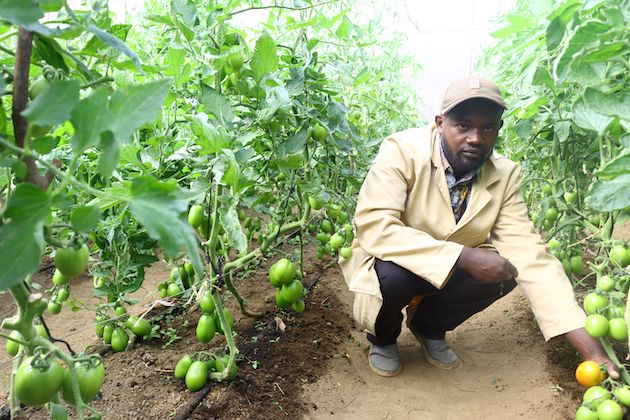NAIROBI, Oct 30 (IPS) – Smallholder agricultural enterprises in Africa face a lot of challenges getting loans from financial institutions like banks due to the stringent requirements they can hardly fulfil. Investor confidence is usually lacking, given the risks involved in this sector of the economy.
Climate change has not helped matters either. Prolonged droughts and unreliable rainfall patterns have made them less resilient. And since a paltry 1.7 percent of climate finance goes to small-scale agriculture (according to the Climate Policy Initiative), small-scale farmers are left particularly vulnerable.
However, innovative financial solutions targeted at these farmers are transforming the sector in tangible ways in Africa. Organisations like Root Capital are working with small-scale agricultural enterprises using a financial model that is accommodative to their unique needs while addressing the climate change component on the ground.
Root Capital is a nonprofit that supports agricultural enterprises working directly with small-scale farmers. On the other hand, Mercy Corp – an international NGO – through its venture capital arm, supports entrepreneurs who are developing transformative technologies, innovative business models and effective climate adaptation resilience solutions which are usually tech-enabled.
Users of these technologies are in 35 most climate vulnerable countries, according to Scott Onder, the chief investment officer at Mercy Corp. In Kenya, for example, the NGO has partnered with Safaricom, the largest mobile network operator in the country through its DigiFarm product.
The product bundles together a range of solutions for smallholder farmers, helping them become more productive, increase their yields and grow their income.
Batian Nuts Ltd, an edible nuts processing enterprise based in Meru County in central Kenya has seen its operations expand, ever since it started working with Root Capital. This enterprise exports macadamia nuts internationally but also deals in peanuts processing for the local market. It has a base of 8,000 small-scale farmers.
“We chose to work with Root Capital because their interest rates are below what you would normally get from the financial market, plus their terms are very accommodative to a start-up like ours,” says James Gichanga the co-founder of Batian Nuts Ltd.
He explains that commercial banks require considerable collateral, such as parcels of land or other assets, which they do not have.
On the other hand, Root Capital will provide the finances they need, based on the commitment made by the overseas buyer of their produce. The buyer need only provide a letter of intent, committing to purchase macadamia nuts from Batian Nuts Ltd, and “Root Capital will give us money based on that alone,” says Gichanga.
In other words, the buyer of farm produce based in the US, Europe or Asia and the borrower (it could be a coffee cooperative in, say, Rwanda) – or Batian Nuts Ltd in this case – signs an agreement with Root Capital. And when the time comes for payment, the buyer pays Root Capital directly.
“We take our principal interest and then pass the rest of the payment to the coffee cooperative,” explains Elizabeth Teague, the senior director of Climate Resilience at Root Capital.
Even though this type of financing has existed before, their innovation involves applying it to the smallholder agricultural context. This, explains Teague, is a way of mitigating risk without requiring collateral from smallholder farmers.
In addition, they provide small and medium sized agricultural enterprises with technical assistance through a programme known as “agronomic and climate reliance advisory.”
Prior to its partnership with Root Capital, Batian Nuts Ltd used to handle between 300-400 tonnes of produce per year. However, since 2017 when the collaboration begun, the business has more than doubled this capacity to 1,000 tonnes, and its workforce has grown from 26 permanent employees to 55 currently. Its seasonal workforce has increased as well from a couple dozen to 160, who are engaged seven months in a year.
Investors have traditionally shied away from putting their monies in small-scale farmers in sub-Saharan Africa, due in large part to higher cost and risk involved, thus creating an estimated USD 65 billion financing gap for small businesses in the region, according to Teague.
“And then climate change exacerbates that and makes it even riskier for investors,” she adds.
Root Capital works with a network of 200 businesses and 500,000 farmers in Africa, Latin America, and Indonesia.
IPS UN Bureau Report
Follow @IPSNewsUNBureau
Follow IPS News UN Bureau on Instagram
© Inter Press Service (2023) — All Rights ReservedOriginal source: Inter Press Service
Check out our Latest News and Follow us at Facebook
Original Source

